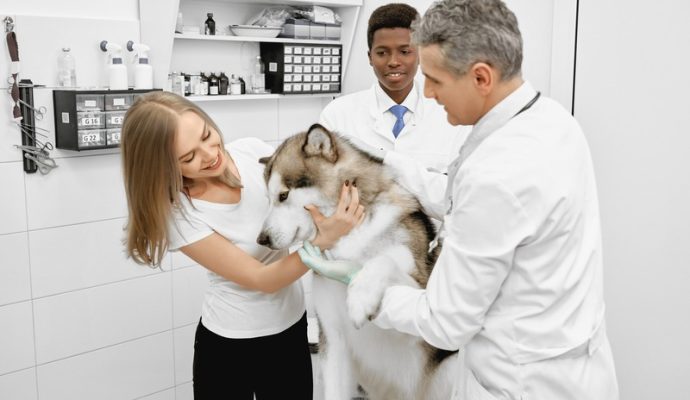As pet owners, we never want to imagine our beloved furry friends in emergency situations. However, being prepared to recognize the signs of potential danger and act accordingly can make all the difference in saving your pet’s life. In this article, we will discuss common pet emergency situations, as well as what you can do during a pet health crisis to ensure the best possible outcome for your animal friend.
Common Pet Emergency Situations
Choking and Breathing Difficulties
When your pet is struggling to breathe, it’s a clear indication that something is wrong. Choking or breathing difficulties can arise from various causes, such as a foreign object lodged in the throat or respiratory illnesses. Symptoms include gagging, coughing, excessive drooling, or pawing at the mouth. It’s crucial to act accordingly by trying to remove the foreign object, if visible, or rush your pet to the nearest veterinarian for immediate assistance.
Seizures
Seizures can be frightening to witness, and multiple factors can trigger them, including epilepsy, brain tumors, or toxins. Typical symptoms include loss of consciousness, muscle spasms, or uncontrollable shaking. When faced with this emergency, remain calm, and quickly move any nearby objects that may cause injury. Time the seizure, provide a comfortable space for your pet, and contact your veterinarian immediately.
Poisons and Toxic Substances
Pets, like curious children, can accidentally ingest various toxins commonly found in households. These include pesticides, human medications, certain types of plants, and household cleaners. Symptoms suggesting poisoning include vomiting, diarrhea, excessive drooling, unsteady gait, or seizures. In such situations, identify the toxic substance and contact your veterinarian or an emergency poison hotline immediately.
Trauma and Injuries
Car Accidents
With no way to know the extent of internal injuries, car accidents involving pets are daunting. Symptoms may include limping, labored breathing, or signs of shock. It’s crucial to remain calm, approach your pet slowly, and, if necessary, restrain them with a blanket. Transport them to an emergency vet for evaluation and treatment.
Veterinary Laboratory
On this page, it’s important to note that if your pet is involved in an accident, an immediate visit to the veterinary laboratory is crucial. Timely diagnosis through blood tests, X-rays, and other diagnostic methods can help determine the severity of any internal injuries and guide appropriate treatment plans.
Bite Wounds and Attacks
Dog fights or other attacks can result in bite wounds ranging from minor punctures to more severe injuries. Symptoms of severe bite wounds may include excessive bleeding, swelling, or discharge from the wound. Act accordingly by cleaning the wound with water and applying pressure to control bleeding. Visit your vet or an Animal Emergency Clinic as soon as possible for proper wound care and assessment, as bite wounds can become infected and pose risks to long-term health.
Falls and Fractures
Falls can lead to various injuries, including fractures, dislocations, and internal damage. Signs that your pet may have sustained a fall-related injury include limping, swelling, or apparent pain and distress. Keep them as still as possible, using a blanket or similar object for support if needed, and transport your pet to a veterinary clinic.
Gastrointestinal Emergencies
Foreign Body Ingestion
Swallowed foreign objects can be dangerous for your pet, particularly if they cause a blockage. Symptoms include loss of appetite, vomiting, diarrhea, or abdominal pain. Act accordingly by seeking veterinary help, as timely intervention may prevent major complications.
Bloat or Gastric Torsion
Bloat is a life-threatening condition in which the stomach fills with gas and twists upon itself. Symptoms include excessive drooling, retching without producing vomit, and a visibly enlarged abdomen. Seek emergency veterinary care immediately if you suspect bloat.
Pancreatitis
Pancreatitis occurs when the pancreas becomes inflamed, leading to symptoms such as vomiting, diarrhea, fever, and lethargy. If you suspect pancreatitis, contact your veterinarian for guidance and treatment options.
Cardiovascular and Respiratory Emergencies
Heart Failure
Heart failure can result in various symptoms, including coughing, rapid breathing, and fatigue, requiring immediate medical attention to minimize the long-term effects on your pet.
Heatstroke
Pets left in hot environments can suffer heatstroke, with symptoms such as excessive panting, disorientation, and vomiting. Act accordingly by moving your pet to a cooler location, providing water, and seeking veterinary assistance.
Asthma and Respiratory Issues
Asthma or respiratory infections can make it difficult for your pet to breathe. Symptoms include coughing, wheezing, or open-mouthed breathing. Prompt veterinary care is essential to address these issues and ensure your pet’s well-being.
Urogenital Emergencies
Urinary Tract Obstruction
A urinary tract obstruction can be life-threatening, with symptoms including frequent attempts to urinate, crying in pain, or bloody urine. Contact your veterinarian immediately for treatment.
Pyometra
Pyometra, an infection of the uterus, occurs in unspayed female dogs and is characterized by a pus-filled uterus. Symptoms may include lethargy, fever, and vaginal discharge. This condition requires urgent veterinary attention.
Soft Tissue Surgery
When faced with certain emergencies like urinary tract obstructions, gastrointestinal issues, or tumors, soft tissue surgery in dogs may be necessary to treat the underlying problem. Consult with a veterinary specialist to determine the best course of action.
Preparing for Pet Emergencies
- First aid kit essentials B. Regular veterinarian visits C. Importance of pet insurance D. Emergency contact information
Conclusion
The unexpected can happen at any time, and it’s crucial to recognize the signs of an emergency to act accordingly and save your pet’s life. By staying informed and prepared, you’ll be better equipped to handle any situation and ensure the best possible outcome for your beloved pet.




